African legend: Dieuveil Malonga
The Congolese-born celebrity chef is changing the way the world looks at African cuisine
It all started with a small roadside restaurant in the Congolese town of Linzolo on the outskirts of Brazzaville. At the eatery owned by his grandmother, a young Dieuveil Malonga first fell in love with cooking – the aromas, the spices, the ability of food to bring people together – with scores of travellers dropping by for treats like saka-saka (cassava leaves). It’s a vivid memory that’s spurred him on ever since, as he’s risen from a culinary prodigy to a full-blown celebrity chef on a mission to change the way the world looks at African cuisine.
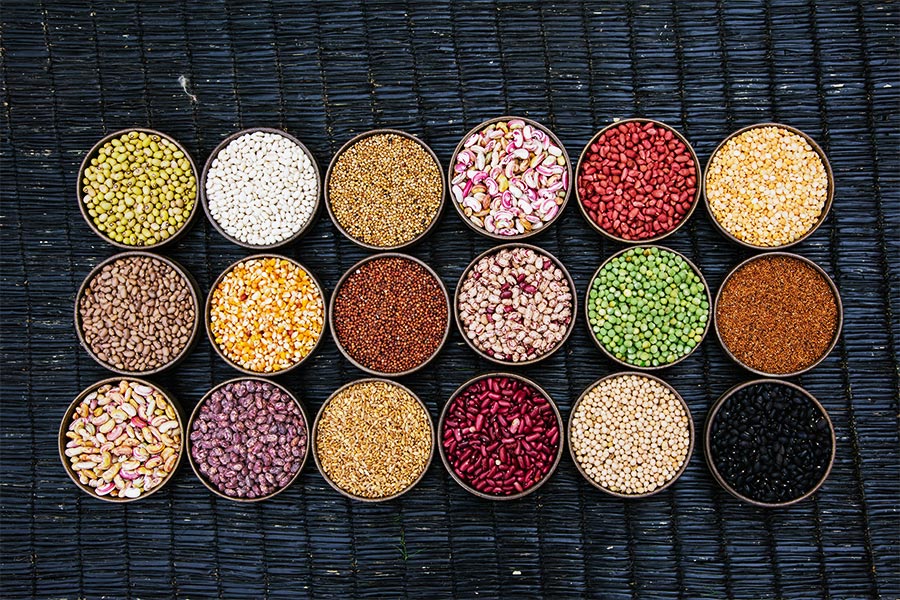
A colourful array of beans, pulses, grains and other delights

“I grew up in a family that celebrated food and it’s something that set me on the path to become a chef at a very young age,” says Malonga. “The fact that I was surrounded by all these amazing spices and produce growing up has made me very positive about African cuisine and how much more it can grow. There are ingredients in some parts of Africa that people don’t know about – ingredients I’m trying to promote.”
Malonga’s main platform to get the word out is Meza Malonga, his eatery-cum-food-laboratory in Kigali, Rwanda. Blending Bantu, Zulu, Maasai and many other influences, the chef and a small team experiment and serve up Afro-fusion cuisine, using fresh fruit and vegetables grown on Malonga’s farm in Musanze, a city in the lush foothills of Rwanda’s Virunga Massif.
Featuring an ever-evolving tasting menu decided upon in the morning depending on the ingredients available, Meza Malonga might have dishes like hibiscus-flavoured Mombasa tuna, Nile perch with Ugandan avocados and Ghanaian chilli sauce or bread made with Ethiopian sorghum. Every beautifully prepared dish (and they are all thoroughly Instagram worthy) created at Malonga’s “gourmet lab” tells a story about a different part of Africa – nations brought together in one creative kitchen.
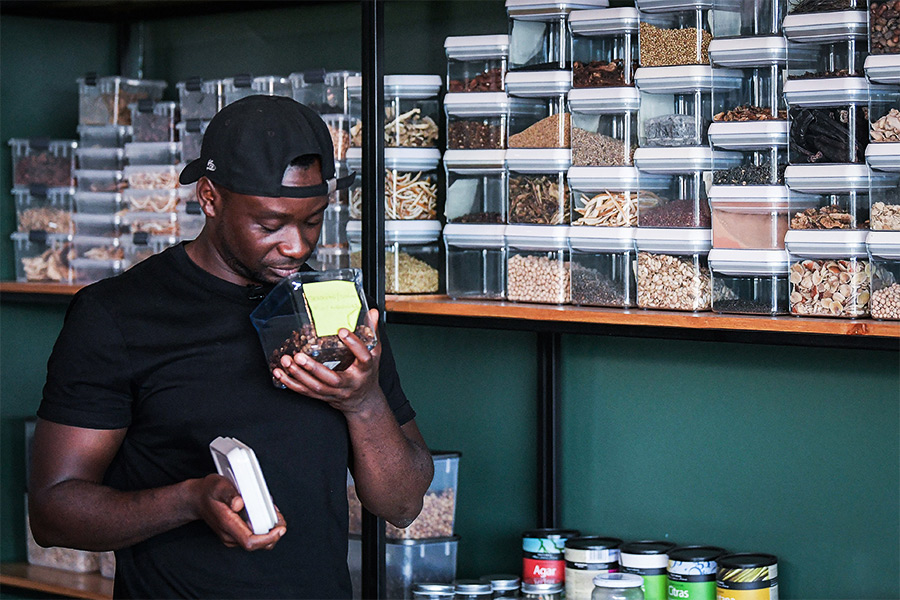
Dieuveil Malonga smells the day's spices / Image: Getty Images

“Afro-fusion cuisine is all about creating a bridge between different ingredients and dishes across the African continent,” says Malonga, who was recently named a Champion of Change by industry barometer The World’s 50 Best Restaurants, and also made the Forbes 30 under 30 list in 2018. “So, while I’m based in Rwanda, which has the most incredible volcanic soil to grow fruit and vegetables, I also use spices from Cameroon, or something from Ethiopia and Nigeria, and do it in one place. And while taste is of course key, it’s also important that the dishes look good, because food is like fashion or art. It’s supposed to stir the emotions.”
While Malonga’s palate was born in Africa, his culinary technique was honed in Europe. After losing both parents he was raised by his grandmother from the age of nine, before being sent to live in Germany at 13. “It wasn’t easy – I came from Congo where you have an amazing, tropical climate, and then you go to Germany and it’s too cold,” Malonga recalls. “And people don’t understand your language, which was a big frustration.”
The biggest adjustment, though, was the local cuisine. Missing Congolese flavours, Malonga started cooking for himself, scouring African shops for spices and ingredients. His passion for food led him to study gastronomy in Münster, where his abilities soon got noticed.
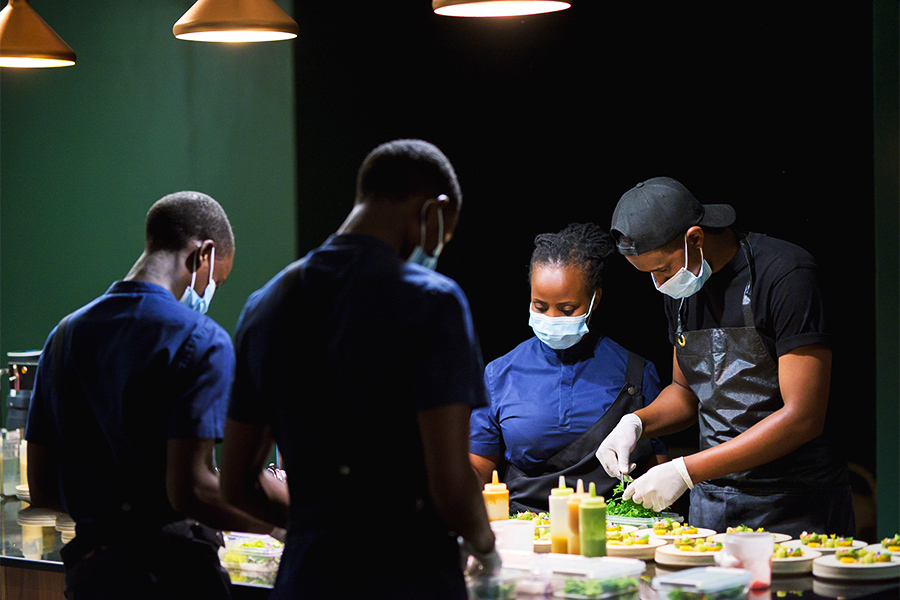
Preparing a meal is a science at Meza Malonga

“My teacher was surprised how I was able to change the taste of my food with African ingredients and spices,” Malonga says. “I was using German cooking techniques with ingredients from Africa and kept evolving as chef.”
Malonga would go on to work in several Michelin-starred restaurants in Germany, where he learned how to run a kitchen and manage food cost. His star continued to rise when he appeared in the 2014 version of TV show Top Chef in France. Despite his European success, Africa kept calling out to the chef and in 2015 he set off on an extraordinary, two-year culinary journey around the continent, taking in 48 countries.
“I wanted to learn about African cuisine and the continent’s amazing’s food heritage,” Malonga says. “In Cameroon I found that they have this amazing climate, and you can get a lot of ingredients from all over Africa. It’s like a miniature version of the continent. In Nigeria you have many tribes and a lot of recipes, while they are also open to people who like to try new things and have incredible food variety. In the Ivory Coast they are more focused on traditional food, using local ingredients to create something. For me, that is the cuisine of tomorrow, to create something from what you have, close to your house.”
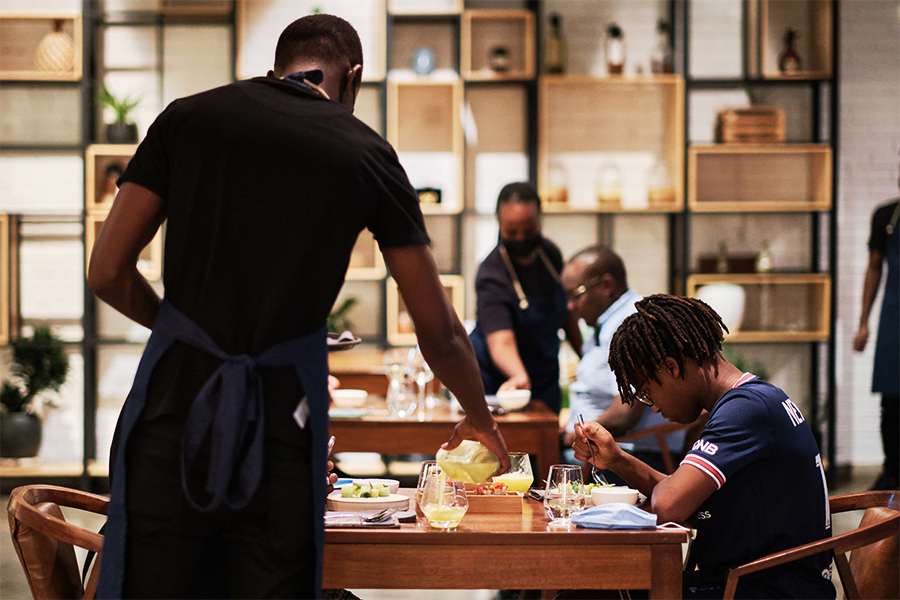
Impeccable service at Meza Malonga

During his travels Malonga was struck by the communication gap that existed between chefs and the companies and farms looking for culinary talent. Determined to get everyone reading from the same recipe, he created Chefs in Africa, a digital educational platform that promotes African gastronomy and helps chefs on the continent to build their careers. The initiative’s website features profiles of young cooks and their inventive recipes, as well as information about culinary schools, restaurants and recruiting companies.
Food is like fashion or art. It’s supposed to stir the emotions.
“Chefs in Africa is all about connecting people,” says Malonga. “We share data and connect companies and farms directly with chefs. We also write CVs for some young chefs. In Africa there are some people who don’t speak a colonial language like French or English, and if they want to go and work in another country, they sometimes need some help.”
The platform, launched in 2016, now represents around 4,000 chefs from all over Africa. “It doesn’t matter if you’re from a small village, if you do good work people will come and find you,” Malonga points out. “The important thing is to really put in the long hours, because talent alone is not enough. You have to work hard.”
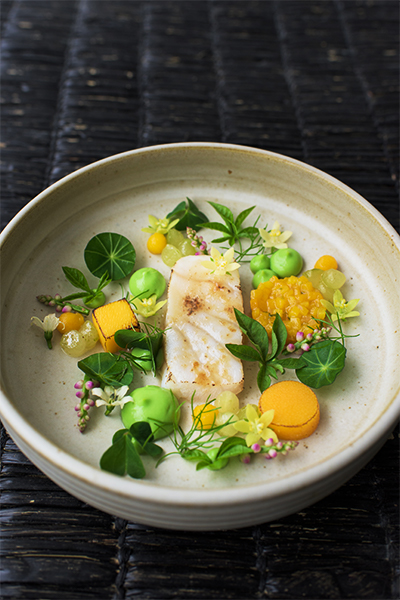
Another Instagram-worthy dish ready for service
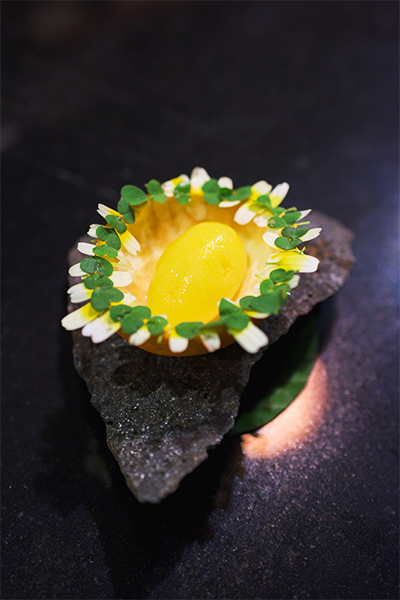
Malonga focuses on local ingredients in his cooking
It’s a work ethic that will be hard-wired into Malonga’s latest protect. In 2023 the chef plans to open a new restaurant in Masanzi that will showcase local ingredients and promote green agriculture in the region. Meza Malonga Masanzi will have an open kitchen where diners can come for cooking classes, a fermentation house, innovation lab and guest accommodation. There will also be a culinary training centre where young cooks will be shaped into chefs who can act as ambassadors for African cuisine.
“By promoting Africa’s chefs, we can get people talking more about African gastronomy,” Malonga says. “30 years ago, no-one was talking about Chinese cuisine and no-one knew about food from Peru, but look how that has changed. The same can happen in Africa, so it’s very important to train chefs so they can show people our food heritage in a modern way.”
A young chef planning their career would do well to take a leaf out of Malonga’s ever-expanding book. Given that his culinary journey started at a modest eatery outside Brazzaville, his plans for a new restaurant and training centre show just how far the chef has come. It’s a rise to prominence that would have touched the woman who introduced him to the joy of food all those years ago. “My grandmother passed away when I was young, so she didn’t see me become a chef,” says Malonga. “I think she would have been proud of what I’ve achieved.”
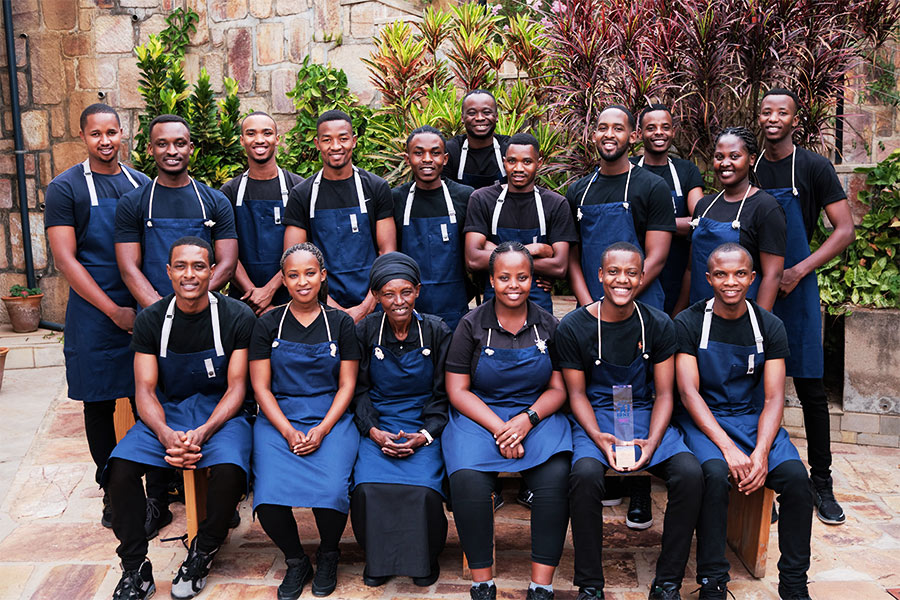
The Chefs in Africa team take a rare moment away from the kitchen

Tea plantations and factories
After being introduced to Rwanda in 1952, tea is now one of the country’s biggest exports. The majority of the tea is cultivated at impressive plantations, where green leaves cover the rolling hills as far as the eye can see. A number of the factories where the tea is processed – like Gisovu Tea and Gisakura Tea in Nyungwe National Park – are open to the public, offering tours and accommodation.
Fish farms on Lake Kivu
With its large number of islands and stunning mountainous surroundings, Lake Kivu is one of the country’s most spectacular sights. To make your visit even more memorable you can drop in at one of the many fish farms on the lake. Lakeside Fish Farm, an hour from Kigali, offers tours of its hatchery and has a guesthouse and campsite.
Akagera National Park
Comprising savannah, woodland, wetland and a dozen lakes, Akagera National Park in eastern Rwanda is the perfect place for a safari and is home to zebra, giraffe, elephant, more than 480 bird species, Eastern black rhino and a family of lions that was relocated from South Africa.
Coffee plantations
Since coffee plants were first introduced to Rwanda in 1904, making the perfect cuppa has become a roaring trade in the country. There are around 450,000 small growers across Rwanda, but if you want to visit one of the plantations, head to Gisenyi, on the banks of Lake Kivu, where local tour companies lead tours explaining the coffee-making process from cherries to cup.
King’s Palace
Located in Nyanza in Rwanda’s southern province, the King’s Palace is a beautiful, thatched structure (shaped like a beehive) that’s a reconstruction of the traditional royal residence. Almost as impressive as the palace are the resident long-horned Inyambo cattle, descended from the king’s herd, that have keepers who sing to them.